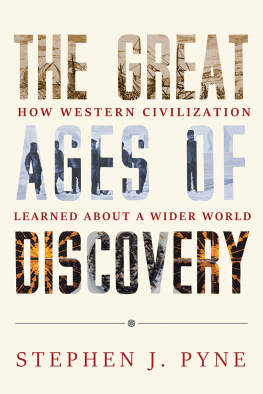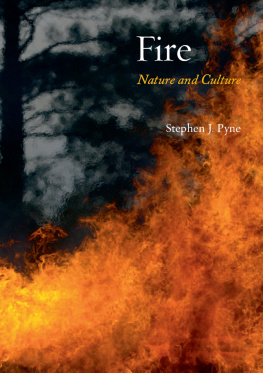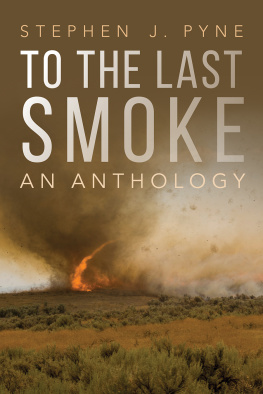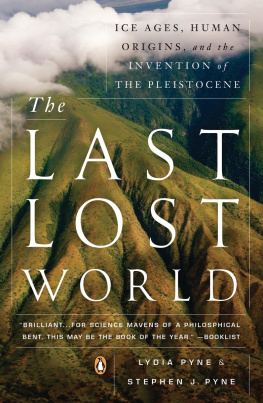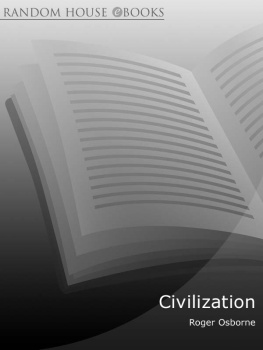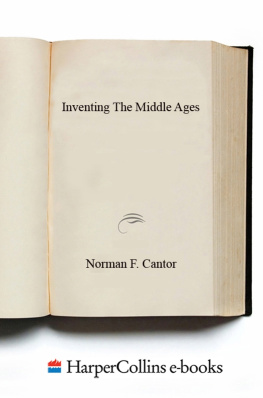Stephen J. Pyne - The Great Ages of Discovery: How Western Civilization Learned About a Wider World
Here you can read online Stephen J. Pyne - The Great Ages of Discovery: How Western Civilization Learned About a Wider World full text of the book (entire story) in english for free. Download pdf and epub, get meaning, cover and reviews about this ebook. year: 2021, publisher: University of Arizona Press, genre: History. Description of the work, (preface) as well as reviews are available. Best literature library LitArk.com created for fans of good reading and offers a wide selection of genres:
Romance novel
Science fiction
Adventure
Detective
Science
History
Home and family
Prose
Art
Politics
Computer
Non-fiction
Religion
Business
Children
Humor
Choose a favorite category and find really read worthwhile books. Enjoy immersion in the world of imagination, feel the emotions of the characters or learn something new for yourself, make an fascinating discovery.
- Book:The Great Ages of Discovery: How Western Civilization Learned About a Wider World
- Author:
- Publisher:University of Arizona Press
- Genre:
- Year:2021
- Rating:3 / 5
- Favourites:Add to favourites
- Your mark:
- 60
- 1
- 2
- 3
- 4
- 5
The Great Ages of Discovery: How Western Civilization Learned About a Wider World: summary, description and annotation
We offer to read an annotation, description, summary or preface (depends on what the author of the book "The Great Ages of Discovery: How Western Civilization Learned About a Wider World" wrote himself). If you haven't found the necessary information about the book — write in the comments, we will try to find it.
The Great Ages of Discovery: How Western Civilization Learned About a Wider World — read online for free the complete book (whole text) full work
Below is the text of the book, divided by pages. System saving the place of the last page read, allows you to conveniently read the book "The Great Ages of Discovery: How Western Civilization Learned About a Wider World" online for free, without having to search again every time where you left off. Put a bookmark, and you can go to the page where you finished reading at any time.
Font size:
Interval:
Bookmark:
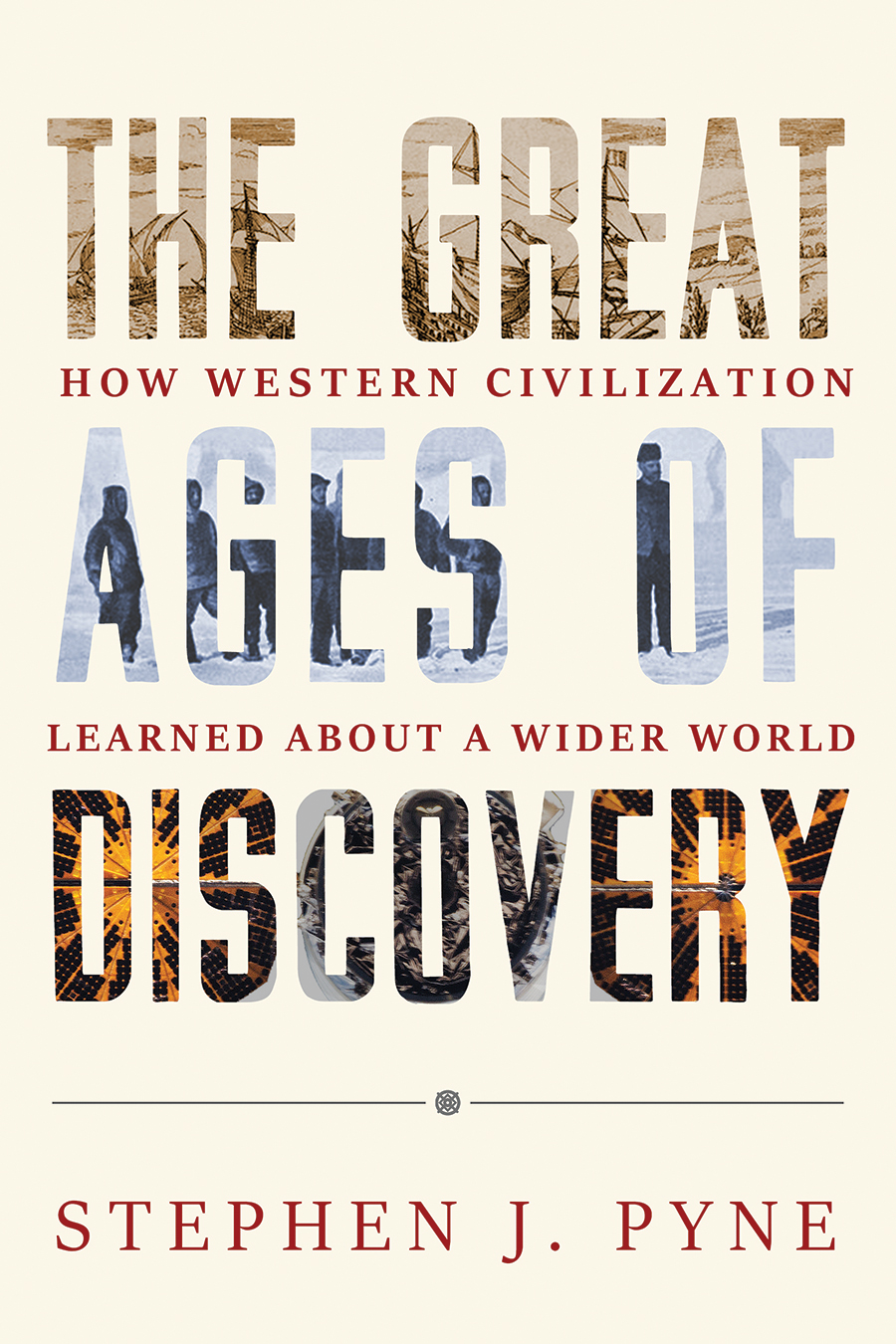

Stephen J. Pyne

The University of Arizona Press
www.uapress.arizona.edu
2021 by The Arizona Board of Regents
All rights reserved. Published 2021
ISBN-13: 978-0-8165-4111-9 (hardcover)
Cover design by Leigh McDonald
Cover images: Columbus in India primo apellens, magnis excipitur muneribus ab Incolis. Columbus landing in Hispaniola, engraving by Johann Theodor de Bry (15611623), National Maritime Museum, Greenwich, London [top]; The crew of the Fram in the Bay of Whales, from The South pole; an account of the Norwegian Antarctic expedition in the Fram, 19101912, by Roald Amundsen [center]; Cygnus space frieghter, NASA [bottom]
Designed and typeset by Leigh McDonald in Minion Pro 10.25/15 and Telmoss WF [display]
Excerpts from VOYAGER: SEEKING NEWER WORLDS IN THE THIRD GREAT AGE OF DISCOVERY by Stephen J. Pyne, copyright 2010 by Stephen J. Pyne. Used by permission of Viking Books, an imprint of Penguin Publishing Group, a division of Penguin Random House LLC. All rights reserved.
Library of Congress Cataloging-in-Publication Data
Names: Pyne, Stephen J., 1949 author.
Title: The great ages of discovery : how western civilization learned about a wider world / Stephen J. Pyne.
Description: Tucson : University of Arizona Press, 2021. | Includes bibliographical references and index.
Identifiers: LCCN 2020018149 | ISBN 9780816541119 (hardcover)
Subjects: LCSH: Discoveries in geographyHistory. | Voyages and travelsHistory.
Classification: LCC G80 .P96 2021 | DDC 910.9dc23
LC record available at https://lccn.loc.gov/2020018149
Printed in the United States of America
This paper meets the requirements of ANSI/NISO Z39.48-1992 (Permanence of Paper).
To Sonja
a polestar, as ever
to Lydia and Molly
who tolerated my errant wanderings over the years
and
to William H. Goetzmann
who gave me a scholarly sextant by which to navigate
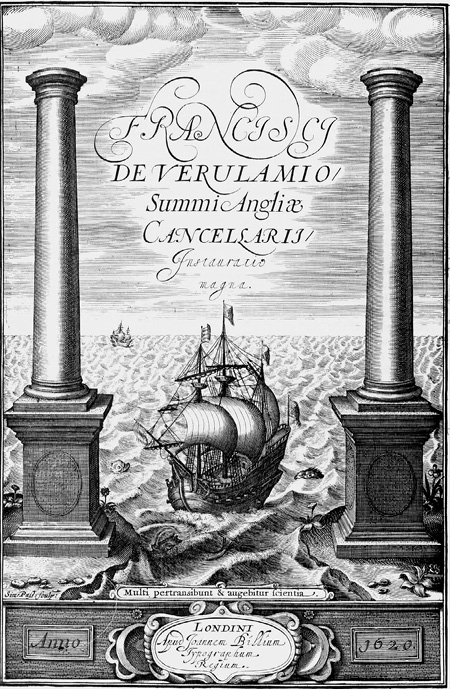
Francis Bacon, The Great Instauration (1620), frontispiece. Sailing beyond the Pillars of Hercules.
And most important of all was the coast of Portugal.
Carl Sauer, Northern Mists
W hen the 14th century ended, Europe occupied a marginal part of the known world, and a far smaller part of the world beyond. Even to the heartland of European civilization, then still clustered around the Mediterranean Sea, Atlantic Europe was the farthest back country, as Carl Sauer observes, full of barbarians and the shores of a difficult and repellent sea, mare tenebrosum, a Sea of Darkness.
Geographically, Europe claimed the splintering western flank of the great Eurasian landmass. It appeared as a shrinking tangle of peninsulas and islands, like the fraying end of a rope, that dissolved into the Atlantic Ocean. Economically, it remained feudal and had few goods or services the rest of the world wanted other than bullion. It always teetered on famine, had no significant manufacturing, and found itself on the deficit side of commerce. Demographically, it ended the century with half the people with which it had begun. The Black Death, ravaging town and country from 1347 to 1351, had killed 3060 percent of its population. Militarily, it endured such internal disasters as the Hundred Years War, and it was retreating from the advances eastward it had made during the Crusades. In 1396 it suffered a crushing defeat at Nicopolis from the expanding Ottoman Turks. In 1379 even the patina of unity provided by Christendom was rent when two popes were elected, one in Avignon, and one in Rome, announcing the Great Schism; thirty years later, a third pope was elected. Culturally, its first renaissance of learning that had flourished in the 12th and 13th centuries had sunk into a scholasticism that had too many commentators and not enough texts to comment on. A rebirth of classical learning was underway in Italy, but the scientific revolution was a good three centuries in the future. What Europe knew about a wider world it gleaned from ancient texts and a handful of travelers and traders who had reconnected with the east during the Pax Mongolica. In many ways Europa knew less about the world than it had a millennium before.
What the rest of the world knew about Europe is unclear. It was probably not much, and probably not of much concern except to immediate neighbors. Europe was not a destination for scholars, missionaries, travelers, artists, or traders. It was hemmed in on the east by hostile, more powerful peoples, and on the west by the horizon-eclipsing Sea of Darkness.
Yet, over the course of the coming century, Europe would take to the world ocean, and by the mid-16th century it would connect with all the populated continents, establish commercial and military empires that spanned both the New and Old Worlds, and still others yet more exotic, and inscribe a map of the planet that all peoples would come to accept. Spearheaded by geographic exploration, it moved from the margins of the world to something like its center.

In retrospect, it is obvious that Europes expansion had to be seaborne. But it was not obvious at the time. Europe had little that was special by way of blue-ocean technology. Voyages westward had repeatedly stalled or been lost. Nor was it alone in having a maritime tradition, or in sailing beyond its home range. It was but one of a suite of commercial societies built on shipping.
The major civilizations centered around Eurasia, or rather its margins. China dominated the Pacific Coast; India, the Indian Ocean, extending into Indonesia; and the Islamic ecumene, with its southern rims spilling across northern Africa and penetrating into the South China Sea. These were joined by trade routes that traced back to antiquity. In the Americas a succession of civilizations flourished in Mesoamerica, with special concentration in the Valley of Mexico, and in the highlands of present-day Peru. Apart from these primary hearths, there were many others of regional or subcontinental significance. Africa had severalthe Zimbabwe and the empire of Monomotapa in the south, Ghana in the west, full of gold and slaves, and Ethiopia in the east, better known to Europe as the Kingdom of Prester John, a Christian principality with which Europe might forge an alliance against Islam.
Each people naturally considered themselves as the core, and created maps and narratives that placed their homeland at the center of the world and their story at the core of the worlds narrative. Curiously, Europe was an exception. Its conversion to Christianity put the center of its mappa mundi in the Holy Land. The Roman Empire that had defined Europe for centuries was split, north and south, east and west. Islam claimed the south; Christendom, the north; they fought in Spain, the Balkans, and throughout the Mediterranean Sea. The memory of Rome also left Latin Europe on the fringes or loosely linked at hinges such as Venice. It was marginal to world trade, military might, and intellectual achievement, still harking back to an imagined golden age when philosophers spoke Greek and statesmen Latin.
Next pageFont size:
Interval:
Bookmark:
Similar books «The Great Ages of Discovery: How Western Civilization Learned About a Wider World»
Look at similar books to The Great Ages of Discovery: How Western Civilization Learned About a Wider World. We have selected literature similar in name and meaning in the hope of providing readers with more options to find new, interesting, not yet read works.
Discussion, reviews of the book The Great Ages of Discovery: How Western Civilization Learned About a Wider World and just readers' own opinions. Leave your comments, write what you think about the work, its meaning or the main characters. Specify what exactly you liked and what you didn't like, and why you think so.

